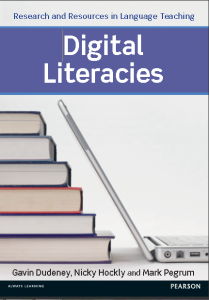 To celebrate the publication of our latest book Digital Literacies (with Gavin Dudeney and Mark Pegrum), my last blog post looked at the what and why of digital literacies. The next few posts will look at classroom activities designed to help your students develop these. Although our book is primarily aimed at English language teachers, these activities can be adapted for other types of classes, and are especially relevant to teenagers and young adults.
To celebrate the publication of our latest book Digital Literacies (with Gavin Dudeney and Mark Pegrum), my last blog post looked at the what and why of digital literacies. The next few posts will look at classroom activities designed to help your students develop these. Although our book is primarily aimed at English language teachers, these activities can be adapted for other types of classes, and are especially relevant to teenagers and young adults.
The Save the Pacific Northwest Tree Octopus is a popular website. It describes the rare and elusive tree octopus. it’s habits and habitats, and suggests ways in which you too can help save this endangered species. There is even some video footage of the octopus in action (in a tree). One snag – it’s all a load of nonsense. It’s a spoof site.
We’ve developed a lesson around it. The lesson can help your students develop information literacy through a focused evaluation and analysis of the tree octopus site.
Watch the video (from the British Council Teaching English website) to see how to run the first part of the class with students. The complete lesson plan can be downloaded in PDF format here.
[Click on the image above to go to the video]
If you try out this lesson with students, let me know how it goes. Did they enjoy the lesson? Has it helped develop their critical faculties when searching for information on the web? Will they be so easily fooled next time?
If you need to brush up on what digital literacies are, and why they’re important, see the other blog posts in this series.
Digital literacies blog posts series:
- Digital literacies 1: The what
- Digital literacies 2: The Pacific Northwest Tree Octopus
- Digital literacies 3: Book giveaway
- Digital literacies 4: Teens & social networks
- Digital literacies 5: Remix
Nicky Hockly
The Consultants-E
March 2013
British Council Digital literacies workshop
This workshop provides an introduction to ‘Digital literacies’. It offers an insight to the different aspects of digital literacies and gives some practical tips for the classroom. The workshop was filmed at the British Council Young learner centre, Barcelona in December 2012. The workshop is divided into four parts.
- Part 1 looks at ‘Information literacy’ through a lesson on the Pacific Northwest tree octopus.
- Part 2 gives an overview of the various digital literacies.
- Part 3 shows how ‘media literacy’ can be taught.
- Part 4 examines cultural and Intercultural literacies, and demonstrates how these can be taught.
- Finally, this articles sums it all up: Digital literacies: what are they and why should we care?

